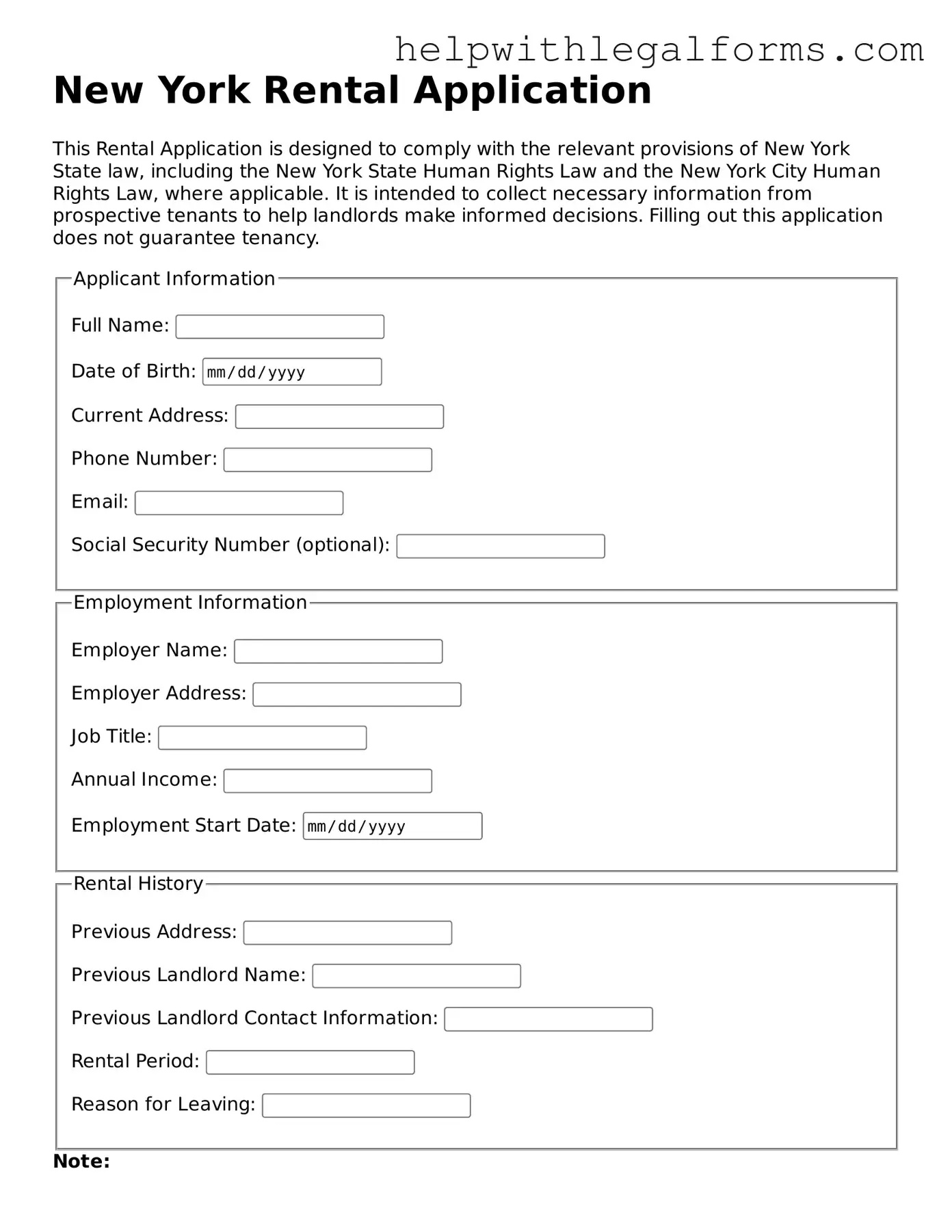What is a New York Rental Application form?
A New York Rental Application form is a document used by landlords or property managers in New York to collect information from potential tenants. This form typically asks for personal information, employment history, rental history, and references. Its purpose is to assess whether an applicant is suitable for renting a property. The form is an essential part of the screening process to ensure tenants can meet their lease obligations.
Is there a fee for submitting a New York Rental Application form?
Yes, landlords or property managers in New York often charge a fee to cover the costs associated with processing a rental application. This fee can vary but is meant to cover the expenses of background checks, credit checks, and other vetting procedures. However, New York State law caps the application fee at $20. This cap is intended to make the application process more affordable for potential renters.
What information do I need to provide on a New York Rental Application form?
When filling out a New York Rental Application form, you'll be asked to provide various pieces of information. This includes your full name, current and previous addresses, social security number, driver's license number, employment information, monthly income, and rental history. You may also need to provide personal references and authorize the landlord or property manager to conduct a credit and background check as part of the application process.
How long does the process take after submitting a New York Rental Application form?
The time it takes for a landlord or property manager to process a New York Rental Application form can vary. Typically, it ranges from a few days to a week, depending on several factors, including how quickly references respond and the speed of the credit and background checks. Landlords or property managers make an effort to complete the process promptly to fill vacancies, but thoroughness is also a priority to ensure they select the right tenant. It's a good idea to follow up if you haven't received a response after a week.
